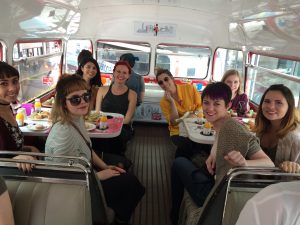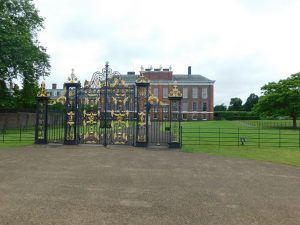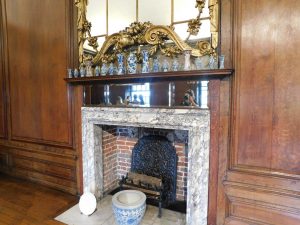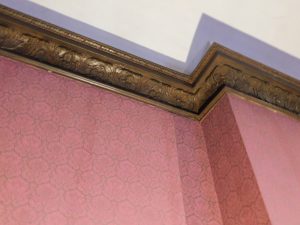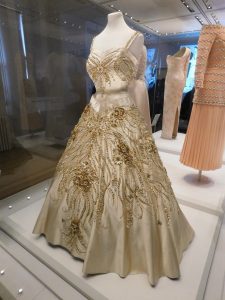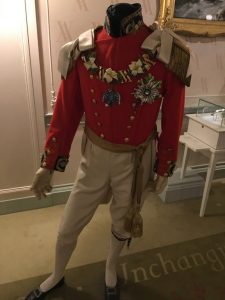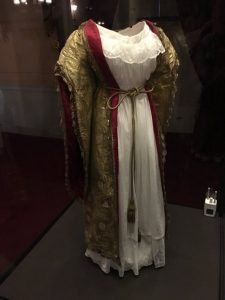Article By: Carly Owens
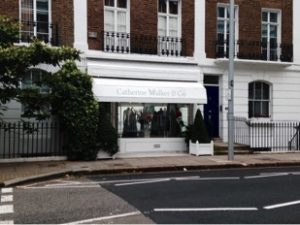
On 65 Sydney Street lies one of the only couture ateliers in London. This atelier happens to belong to couturier Catherine Walker, a name quite familiar amongst most English aristocrats and even Royalty; Kate Middleton and Princess Diana of Wales being some of their most notorious clients.
As we approached a small building with a cream awning bearing the infamous Catherine Walker butterfly logo, we were greeted by a cloud of purple chiffon. The woman that welcomed us was a salon worker, dressed elegantly and flaunting a string of pearls she perfectly fit the Catherine Walker aesthetic. She then guided us around the corner of the salon to another building where the atelier was located. The group was led to a small room at the top of a few narrow flights of stairs. We were surrounded by iconic images of Princess Diana, the ultimate Catherine Walker muse, mood boards with fabric swatches, a library of coffee table books of other designers (including Christian Dior and Madeleine Vionnet), an extensive archive of fashion magazines and two elegant Catherine Walker gowns, both of which were formerly worn by Princess Diana. A posh man soon thereafter greeted us. He was Catherine Walker’s husband, Said Cyrus.
Mr. Cyrus began by providing us with a brief overview of the atelier. The Catherine Walker brand had its inception in 1977 and was created to only make individual commissions. Therefore, every garment produced by the Catherine Walker studio is tailored to fit a specific client. The employees of the atelier are even experts in the field of men’s tailoring. He stated that Catherine Walker is a “slow fashion” brand of grace, luxury and elegance.
“Design is art with a practical function”, says Mr. Cyrus. The fashions created at Catherine Walker, although incredibly detailed and constructed to absolute perfection, serve the purpose of “warmth and modesty”, according to Cyrus. Aside from the so called “practical” purpose of Catherine Walker garments, there is also a great deal of symbolism involved with the design of each garment, especially when it came to the fashions worn by Princess Diana. The English aesthetic was described by Cyrus as gentle and discreet while also being reminiscent of the pastel colors of the English countryside. The garments designed for Princess Diana typically reflected British culture while also paying respect to the cultures and traditions of the other countries she visited.
Mr. Cyrus proceeded to guide the group through the entirety of the atelier. Room after room, workspace after workspace we were shown the ins and outs of this amazing couture house. The studio spaces, although relatively small, were quite beautiful in the eyes of a fibers nerd such as myself. Bolts of fine fabrics lined the rooms, sewing machines proved major eye candy, and being able to see works in progress by the atelier was an immense treat.
All in all, the Catherine Walker studio tour was an experience that words cannot define. Having the opportunity to interact with such beautifully constructed and embellished garments as well as the house in which they were created was truly an inspiration.


